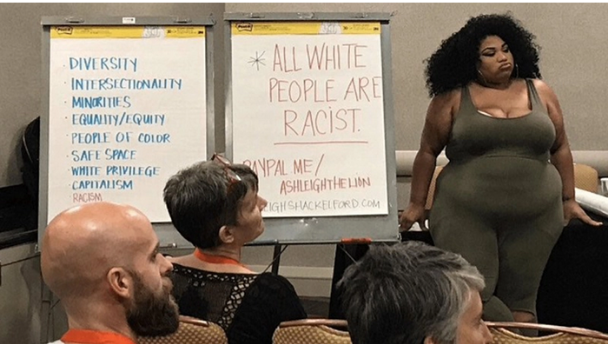
- 1) We admit that we had been socially conditioned by the ideology of white supremacy … that our minds were subject to racial biases, often unconsciously so.
- The first step to any kind of recovery is admitting that we have a problem. Individuals not ready to acknowledge a problem may be unable to pursue and receive the help they need. Becoming aware of a problem — and admitting it to others — can be challenging, but it is a fundamental step on the recovery journey.
- 2) We came to believe that we could embrace our ignorance as an invitation to learn.
- We acknowledge that we, as white people, will never know what it feels like to walk in the world as a person of color. We embrace our “not knowing” as a powerful reminder of our ongoing need for new learning, and we abandon white supremacist traditions of “knowing” how others should feel, think, and act.
- 3) We developed support systems to keep us engaged in this work.
- We are aware that facing and recovering from the effects of white supremacist conditioning will involve difficult, sometimes painful, moments. We commit to developing practices that facilitate self-care … to ensure that we are gentle with ourselves while also bravely able to confront the dehumanizing ideology of white supremacy.
- 4) We journey boldly inward, exploring and acknowledging ways in which white supremacist teachings have been integrated into our minds and spirits.
- After acknowledging the problem, we must also acknowledge that it has impacted many areas of our lives, consciously and unconsciously. Each of us must explore ways, past and present, in which the ideology of white supremacy has negatively impacted us: our understanding of history, our social networks, and our patterns of interacting with people of color, with an emphasized focus on microaggressions.
- 5) We confess our mistakes and failings to ourselves and others.
- Beyond identifying ways in which our thinking, feeling, and relating have been impacted by white supremacist conditioning, honestly addressing the actions that have emerged from that conditioning is a separate, necessary step. Confessing past (and ongoing) microaggressions to a group and receiving support is an essential part of recovery.
- 6) We were entirely ready to deconstruct previous ways of knowing, as they had been developed through the lens of white supremacy.
- After admitting these problems (white supremacist conditioning and related actions), it is then time to let go of “knowledge” developed in isolation from people of color.
- 7) We humbly explore new ways of understanding … proactively seeking out new learning and reconstructing a more inclusive sense of reality.
- This step involves mindfully and intentionally engaging in learning to more deeply understand the experience of people of color in a white supremacist society. This type of learning can take place in a variety of ways, including reading texts written by people of color, actively listening to the experiences of people of color, patronizing businesses owned by people of color, etc.
- 8) We commit ourselves to the ongoing study of our racial biases, conscious or unconscious, and our maladaptive patterns of white supremacist thinking.
- This step is about identifying our triggers to negative thoughts (or other stereotypes, positive or negative) about people of color. We remain curious about the source of our thoughts, fears, and assumptions … and perpetually aware of their existence.
- 9) We develop strategies to counteract our racial biases.
- Developing positive associations to counter negative thoughts is an important, proactive strategy in recovery from white supremacy. We believe that the most powerful way to develop positive associations is to develop authentic relationships with people of color. In lieu of such relationships, we can still engage in daily, proactive practices to retrain our brain from the ill-effects of white supremacist conditioning.
- 10) We embrace the responsibility of focusing on our impact, more than our intentions, in interactions with people of color.
- Taking responsibility for the impact of our actions is an ongoing part of recovery. If we fall back into perpetuating white supremacist ideology — or defending actions that have caused hurt to people of color — it’s important to stop and admit it. Prioritizing impact, instead of explaining the intent of our behavior (i.e. “I didn’t mean to offend you”), is essential for attending to the human being in front of us.
- 11) We engage in daily practices of self-reflection.
- Reflecting on the day — on moments in which we confronted our own white supremacist conditioning and on moments in which we were still bound by its limiting beliefs — is an investment in our recovery. Relevant spiritual practices may play a helpful role in this step, as a way to encourage us toward continued growth and connection, beyond our mistakes.
- 12) We commit ourselves to share this message with our white brothers, sisters, and siblings … in order to build a supportive recovery community and to encourage personal accountability within our culture.
- Assisting others to seek help in recovering from white supremacist conditioning and in becoming an ally with people of color is a core component of recovery. Working with future recovery-from-white-supremacist-conditioning groups is a common choice for this step.